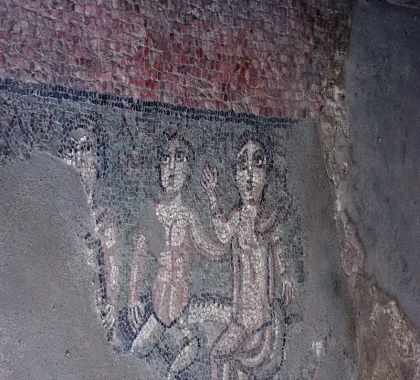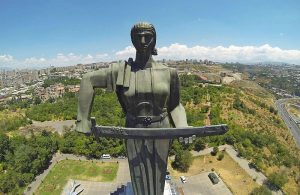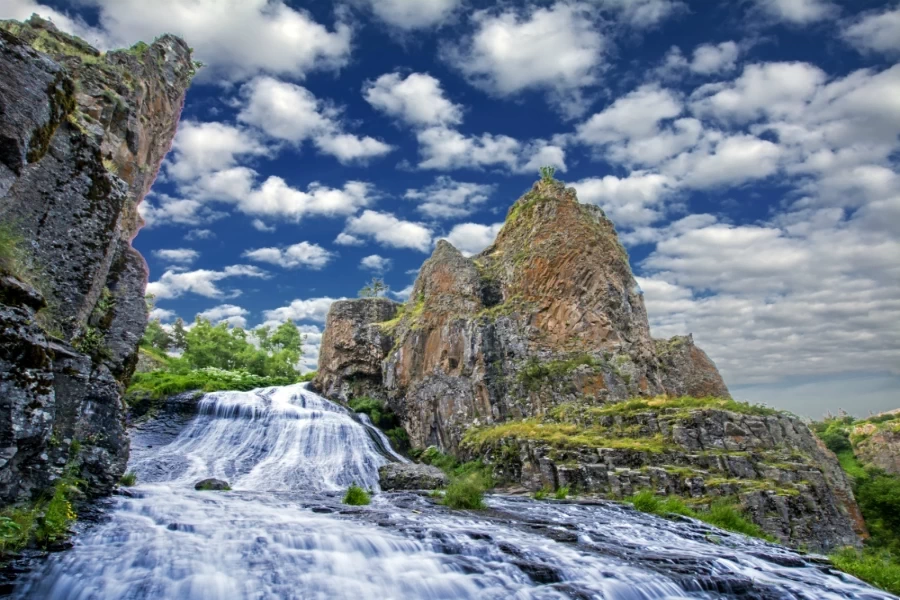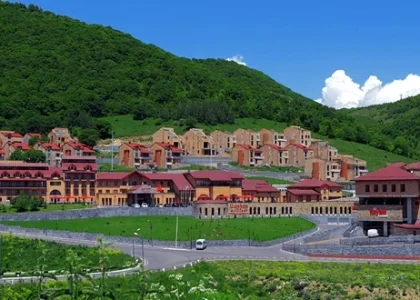Garni Temple is the only temple in Armenia that preserves its classical Greco-Roman architecture. Located in the village of Garni in the Kotayk Province, it stands as one of the country’s prominent pre-Christian landmarks. Built in the Ionic style in the 1st century AD by King Tiridates I, it was dedicated to the sun god Mihr. After Armenia’s conversion to Christianity in the 4th century, the temple was repurposed as a royal summer residence. The temple was destroyed by an earthquake in 1679 but was reconstructed between 1969 and 1975 using anastylosis techniques.
Location and History:
The Garni Temple is situated on the edge of a triangular cliff overlooking the Azat River valley and the Gegham mountains. The site also features Bronze Age walls, a cuneiform inscription of King Argishti I, a Roman bath with a partial mosaic floor, and palace ruins. Garni Fortress is mentioned in the writings of Tacitus as a strategic site for defending the cities of the Ararat plain.
Function and Design:
Designed in the Ionic order, the temple was constructed using local basalt. It originally featured 24 columns, each 6.54 meters tall. The temple has a broad staircase leading to an inner chamber (cella) illuminated by a large entrance and an opening in the roof. It is believed that the temple was dedicated to the god Mihr, though some scholars suggest it may have served as a royal tomb.
Christian Period and Collapse:
When King Tiridates III adopted Christianity as Armenia’s official religion, all pagan temples were destroyed except for Garni Temple, which is thought to have been converted into a royal summer residence or a Christian shrine. The temple bears Arabic and Kufic inscriptions from the 9th and 10th centuries, recording its conversion into a mosque. The fortress and temple suffered significant damage during the Ottoman-Persian wars in the 17th century, and the temple ultimately collapsed in the 1679 earthquake.
Renewed Interest and Reconstruction:
European interest in the temple renewed in the 19th and early 20th centuries. In 1949, the Armenian Academy of Sciences began major excavations at Garni Fortress. In 1968, the Soviet Armenian government approved a reconstruction plan for the temple, which was completed in 1975. Most of the original stones were used in the rebuilding process.
Cultural and Tourist Significance:
Garni Temple is one of Armenia’s most important tourist attractions, drawing thousands of visitors annually. It has been listed as a UNESCO World Heritage site and received the Melina Mercouri International Prize for the Safeguarding and Management of Cultural Landscapes in 2011.
Current Use:
Today, the temple serves as a major tourist site and museum. It hosts annual celebrations for various occasions, enhancing its status as a historical and cultural symbol of the Armenian nation.






























